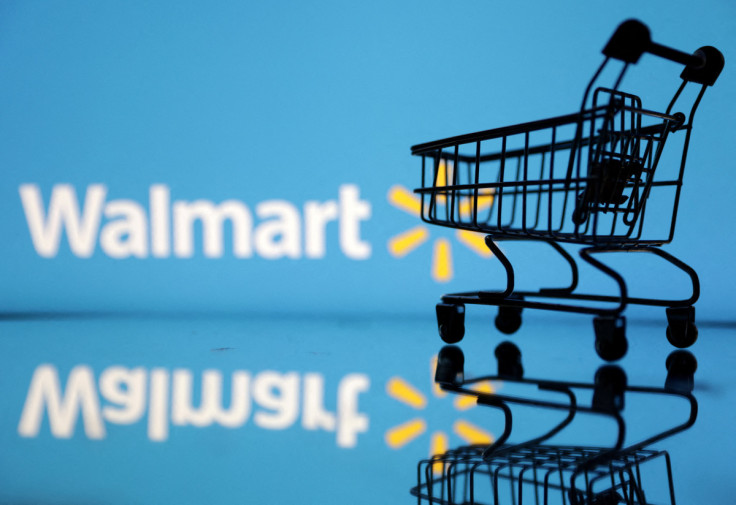Walmart Sees Smaller Annual Profit Drop As Discounts Draw Inflation-hit Shoppers

Walmart Inc nudged up its annual profit forecast on Tuesday, partly reversing a hefty cut less than a month ago, as discounts to clear excess merchandise and lower fuel prices helped it beat expectations for quarterly sales.
The stock, which has fallen over 8% this year, rose 5% in morning trading. Shares of rivals Target Corp, Costco and Best Buy also climbed 1-3% on the news.
Walmart said it now expected fiscal 2023 adjusted earnings per share to fall 9-11%.
Last month, the top U.S. retailer spooked markets across the globe when it forecast a drop of 11-13% - down from previous guidance for a 1% fall - and warned consumers were pulling back on discretionary purchases at a far greater pace than feared as soaring inflation hit their spending power.
That forced Walmart to make steep price cuts on items such as apparel to try to reduce its more than $61 billion worth of inventory at the end of the first quarter.
Walmart's Chief Financial Officer John David Rainey said on Tuesday the company had cleared most of its summer seasonal inventory, but still had work to do in reducing stock of electronics, home and apparel, which he termed "problem areas".
Rainey said he expected Walmart to take a little more than a quarter to get back to acceptable inventory levels. The company reported inventories of $59.92 billion at the end of the second quarter to July 31, still 25% above last year's level.
TRADING DOWN
Financial markets are on tenterhooks over signs U.S. inflation could be easing, which might allow the Federal Reserve to slow interest rate hikes and limit the economic pain. The consumer price index rose 8.5% in July, less than in the previous month, due largely to a 17% drop in gasoline prices.
But Walmart said it was too early to tell whether food price inflation in the third quarter would be different from the double-digit rate of the second quarter.
For now, Rainey said shoppers were still buying low-margin food over general merchandise. They are putting fewer items in their cart and buying more private-label food products, where growth doubled in the second quarter from the first, he added.
"Instead of buying maybe deli meats or beef, they're trading down to things like canned tuna, chicken and, even, beans. We're seeing the same thing in the quantity, where they're trading down for smaller pack sizes that are more affordable. So instead of buying 12 items to buy six items in a pack," Rainey said.
Back-to-school shopping gave Walmart's sales a boost at the end of July, but many parents opted for school supplies instead of clothing.
Surging inflation also drove many mid-to-high income customers to Walmart, mainly to its online business, CEO Doug McMillon said. But they too stuck to grocery purchases over higher-margin general merchandise.
"We expect inflation to continue to influence the choices that families make, and we're adjusting to that reality," McMillon said on an investor call.
KEEPS H2 SALES VIEW
"In our view, Walmart reported a modestly positive quarter. The results reflect the consumer response to high inflation," said Jason Benowitz, senior portfolio manager at the Roosevelt Investment Group.
Total revenue rose 8.4% to $152.86 billion, beating analysts' average expectation of $150.81 billion, according to IBES data from Refinitiv.
While higher food prices drove average bills and boosted same-store sales at Walmart's U.S. stores up 6.5%, higher discounting of general merchandise bit into profits.
Operating income fell 6.8% to $6.85 billion in the quarter.
The Bentonville, Arkansas-based retailer now expects consolidated net sales growth of about 5% and adjusted earnings to decline 9-11% in the third quarter.
Same-store sales for Walmart U.S., excluding fuel, are expected to rise 3%, the company said. It also kept its forecast for 3% same-store sales growth for the rest of the year.
"Walmart maintained its outlook for the second-half of the year - an indication that, even with lower gas prices, consumers are still looking at buying less and cheaper on their weekly shopping trips, Jefferies analyst Stephanie Wissink said.

Copyright Thomson Reuters. All rights reserved.





















